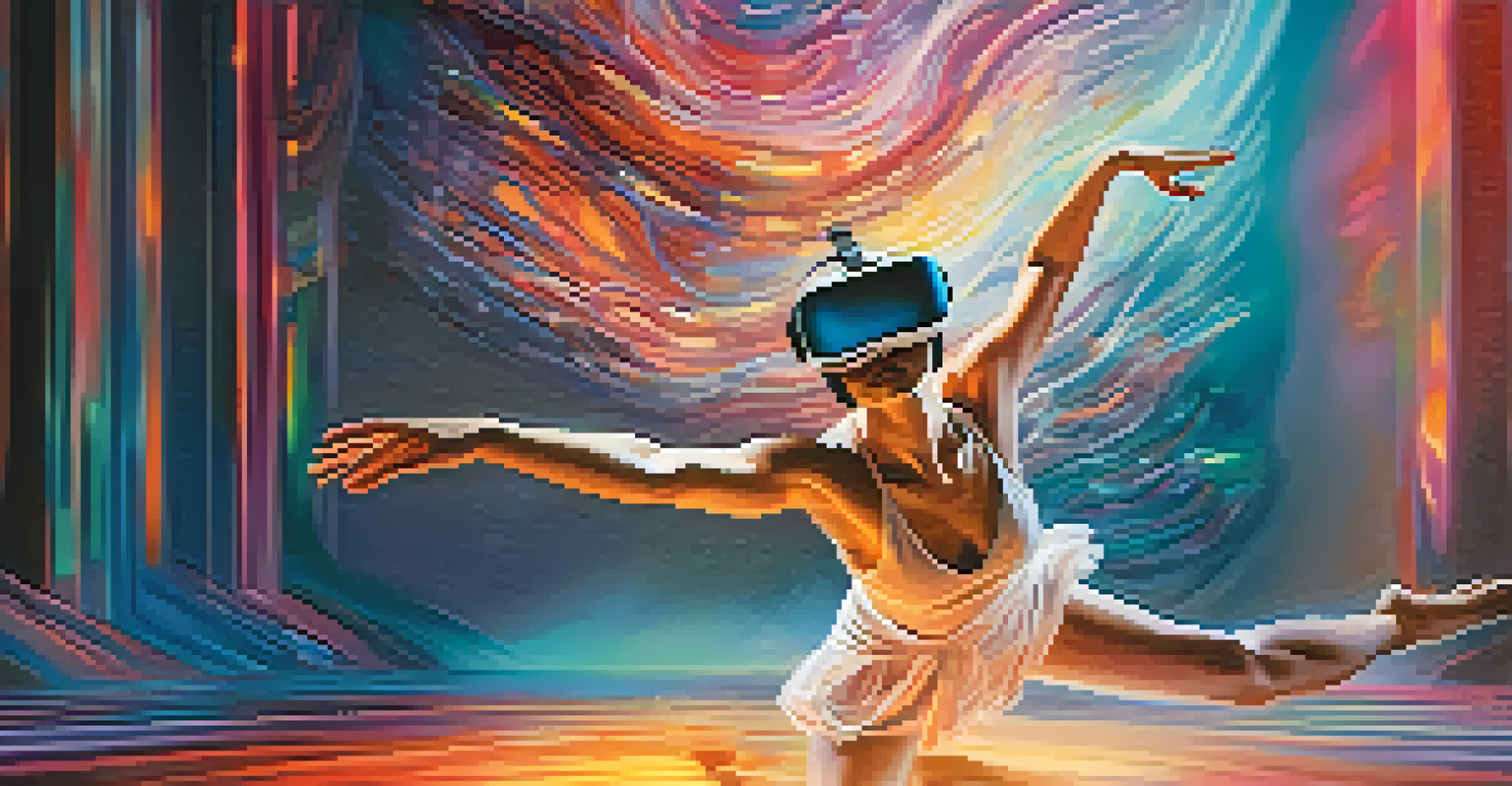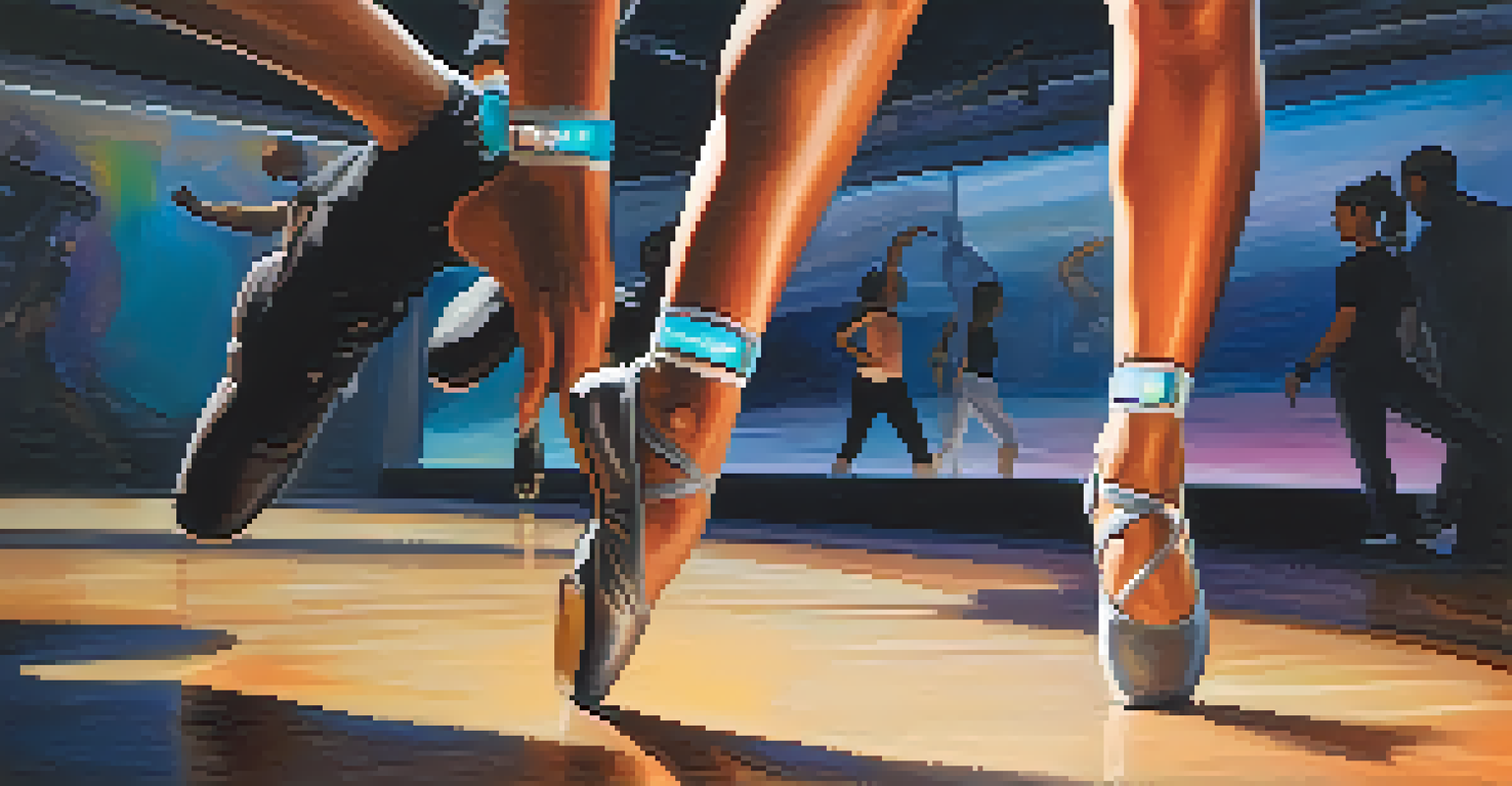Technology in Dance: Enhancing Collaboration through Innovation

The Intersection of Dance and Technology: A New Era
Dance has always been a form of expression, but technology is taking it to new heights. From wearable tech to augmented reality, innovations are reshaping how dancers create and collaborate. This intersection offers exciting possibilities, allowing artists to push the boundaries of creativity and reach wider audiences.
Technology is best when it brings people together.
For instance, consider how motion capture technology enables choreographers to visualize movements in a digital space. This not only helps in perfecting dance routines but also invites collaboration among artists from different disciplines. The result? A richer, more diverse artistic output that reflects a myriad of influences.
As we embrace these technological tools, it's essential to recognize that they are not replacing the artistry of dance; rather, they’re enhancing it. This synergy between tradition and innovation fosters a dynamic environment where creativity can flourish.
Collaboration Tools: Bridging Distance Between Dancers
In today’s globalized world, distance is no longer a barrier for collaboration in dance. With platforms like Zoom and various choreographic apps, dancers can connect and create from anywhere. This accessibility opens doors for partnerships that might have been impossible just a few years ago.

Imagine a choreographer in New York working with dancers in Tokyo, crafting a routine together in real-time. These tools allow for instant feedback, fostering a sense of community and shared purpose, regardless of geographical limitations. As a result, the dance community is becoming more interconnected and diverse.
Tech Transforms Dance Creation
Innovations like motion capture and VR are reshaping how dancers create, collaborate, and express their artistry.
Moreover, these collaboration tools often include features that support creativity, such as screen sharing or virtual rehearsal spaces. By leveraging technology, dancers can brainstorm, refine, and perfect their performances together, turning distance into an opportunity for innovation.
Wearable Technology: Tracking Performance and Enhancing Skills
Wearable technology is making waves in the dance world by allowing dancers to track their performance metrics. Devices like fitness trackers and smart clothing provide insights into movement efficiency, helping dancers refine their skills. This data-driven approach empowers artists to take their training to the next level.
Dance is the joy of movement and the heart of life.
For example, a dancer can analyze their heart rate and calories burned during a rehearsal, allowing them to adjust their routines accordingly. This not only promotes better performance but also helps prevent injuries by encouraging dancers to listen to their bodies. The combination of art and science creates a more informed and healthy dance practice.
As dancers become more attuned to their physical capabilities, they can set realistic goals and achieve them faster. Wearable technology thus becomes an essential companion in their artistic journey, enhancing both individual and collaborative efforts.
Virtual Reality: Immersive Experiences in Dance Creation
Virtual reality (VR) is revolutionizing the way dance is created and experienced. By immersing users in a virtual environment, dancers can experiment with new movements and choreographies like never before. This innovative medium allows for a unique exploration of space and form, leading to groundbreaking artistic expression.
Imagine stepping into a virtual studio where you can experiment with gravity-defying moves without physical constraints. Dancers can visualize their interactions in a three-dimensional space, making it easier to collaborate and innovate. This immersive experience encourages creativity and experimentation, pushing the boundaries of traditional dance.
Collaboration Without Borders
Digital platforms enable dancers to connect globally, fostering creativity and partnerships that transcend geographical limitations.
Additionally, VR opens up new avenues for audience engagement. Viewers can experience performances from different perspectives, making dance more accessible and captivating. The fusion of technology and dance enriches the art form, inviting audiences to be part of the creative process.
Social Media: Building Communities Through Dance
Social media platforms have become vital for dancers to showcase their work and connect with others. From Instagram to TikTok, dancers can share performances, challenges, and collaborate with fellow artists, thereby creating a vibrant online community. This connectivity fosters a sense of belonging and support among dancers worldwide.
For instance, viral dance challenges on platforms like TikTok often bring together dancers from different backgrounds, encouraging collaboration and creativity. These trends not only promote individual talent but also highlight diverse dance styles, enriching the overall dance culture. The power of social media lies in its ability to democratize the art form.
Moreover, social media provides a platform for feedback and learning. Dancers can receive instant reactions from their audiences, which can be invaluable for growth and improvement. By harnessing the power of social media, the dance community continues to thrive and evolve.
Choreography Software: Streamlining the Creative Process
Choreography software is another innovative tool that aids dancers and choreographers in organizing their ideas. Programs like DanceDesigner and Improvisation Technologies allow artists to visualize their work, making the creative process more efficient. These tools help streamline the choreography process and enhance collaboration among team members.
Using such software, choreographers can create detailed notations of their routines, allowing for easier communication with dancers. This clarity ensures that everyone is on the same page, reducing misunderstandings and enhancing the overall flow of rehearsals. The ability to visualize choreography also invites constructive feedback from collaborators.
Wearable Tech Enhances Performance
Wearable devices provide dancers with valuable data to track performance metrics and improve their skills while reducing injury risks.
Additionally, these platforms offer features that support creative brainstorming, like video uploads and collaborative annotations. By integrating technology into the creative process, dancers can focus more on their art while enhancing their collaborative efforts.
The Future of Dance: Embracing Technology for Growth
As we look to the future, the relationship between technology and dance will only deepen. The ongoing advancements in technology promise to unlock even more opportunities for collaboration and creativity. Embracing these innovations is essential for the growth and evolution of the dance community.
Moreover, as dance continues to integrate with various technological platforms, new forms of expression will emerge. This evolution encourages dancers to experiment and break free from traditional constraints, leading to a richer artistic landscape. The future of dance is not just about performance; it’s about connection and collaboration.

Ultimately, the fusion of technology and dance empowers artists to explore uncharted territories. By embracing this synergy, the dance community can cultivate a future that celebrates creativity, innovation, and collaboration.